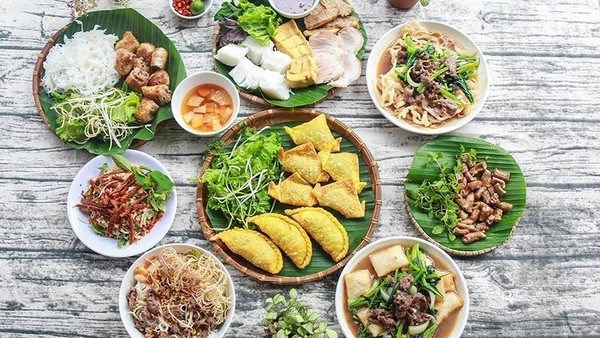CPTPP: opportunities, challenges await VN’s agro-forestry-fishery
Wednesday, November 21,2018
AsemconnectVietnam - The Comprehensive and Progressive Agreement for Trans-Pacific Partnership (CPTPP) is expected to create opportunities for Vietnam to expand markets for major exports like wood and timber products, and seafood.
Nguyen Ton Quyen, Vice President of the Vietnam Timber and Forest Product Association (VIFORES), said the CPTPP will generate more opportunities than challenges for the industry.
Apart from big traditional markets like Japan, New Zealand, Australia and Singapore, Vietnam’s wood sector has widened its reach to new markets such as Canada, Peru and Chile.
Under the CPTPP, many export and import tariff lines on timber products will drop to zero, helping reduce product prices and improve the competitiveness of Vietnamese timber products, he explained.
More importantly, Quyen said, wood processing firms have pinned high hopes on the pact as wood processing equipment will also enjoy zero percent tariffs.
Besides, the CPTPP will help lure more foreign direct investment (FDI) to the domestic wood industry, which traditionally flowed from China, he said, adding that Japanese enterprises have begun to seek opportunities in the country.
Once the deal becomes effective, Vietnamese seafood enterprises will also find it easier to expand export, especially to new markets like Canada, Peru and Mexico.
In tuna exports, for example, Vietnam currently competes with major producers Thailand and China. However, neither of them are CPTPP members, enabling Vietnamese tuna to enjoy more tax incentives in markets within the pact.
The country’s shrimp exports are also expected to benefit from the fact that India, a leading shrimp exporter, is not a CPTPP member.
However, some sectors such as husbandry are forecast to face fierce competition in the domestic market since breeding products from big markets like Canada and Australia will flood Vietnam after the deal comes into force.
Given this, Hoang Thanh Van, head of the Department of Animal Husbandry under the Ministry of Agriculture and Rural Development, suggested the sector innovate and focus on advantageous products.
Local firms should change their management methods and use the reduction of tariffs on husbandry equipment to cut production costs, he said.
According to Nguyen Do Anh Tuan, Director of the Institute of Policy and Strategy for Agriculture and Rural Development, participating countries will cut tariffs but will also raise non-tariff barriers and tighten controls, the largest challenge for Vietnam’s agricultural exports.
To access and dominate big markets like Japan and Australia, Vietnamese major exports such as rice, coffee, pepper, cashew nuts and seafood need to surpass technical barriers and satisfy food safety and hygiene requirements, he said.
Experts also stressed the need for Vietnam to step up trade and investment promotion with partners from the CPTPP members to form global value chains.
Agencies should review vulnerable sectors like husbandry and sugarcane cultivation to set forth supportive policies, helping farmers cut production cost and improve product quality and competitiveness, while minimising losses from competition.
Tuan said standards regarding technique quality and product origins must be the top priorities of the Vietnamese agricultural sector.
It is necessary for businesses to improve their protection capacity in the context of competition with imported products, by intensifying production connectivity, building domestic distribution networks and using the State’s incentive policies.
The 14th National Assembly passed a resolution approving the CPTPP and related documents on November 12 as part of the legislature’s sixth session.
The CPTPP was signed by 11 member states, namely Australia, Brunei, Canada, Chile, Japan, Malaysia, Mexico, New Zealand, Peru, Singapore, and Vietnam in March 2018.
It is one of the most comprehensive trade deals ever concluded and strips 98% of tariffs for the 11 countries with a combined GDP of more than US$13.8 trillion and close to 500 million consumers.
The pact will be provisionally enacted 60 days after it is ratified by six countries.
As such, the CPTPP is hoped to take effect in December 2018, as so far Mexico, Japan, Singapore, New Zealand, Australia and Canada have ratified the deal.
Source: vov.vn
CPTPP accession process for UK begins
Vietnam, Japan to work closely for effective implementation of CPTPP
Vietnamese businesses look to further optimise opportunities from CPTPP
CPTPP – a booster to Vietnam – Canada trade
CPTPP benefits Vietnam-Canada trade ties: experts
CPTPP – a booster for Vietnamese exports to Latin America
Webinar spotlights Vietnam-Canada trade in CPTPP in post-COVID era
Businesses advised to outline long-term vision for CPTPP benefit
Vietnam gains higher exports to Canada, Mexico partly due to CPTPP
CPTPP eases pathway for Vietnamese exports to Canada, Mexico
Vietnam posts trade surplus with other CPTPP members
Vietnam posts positive trade balance with CPTPP
CPTPP: How Japan Became the Adult at the Trade Table
CPTPP to advance Vietnamese farm produce’s foothold in global supply chain

Plan on implementing Decision No. 327/QD-TTG dated March ...
Concretize viewpoints, objectives, tasks and solutions of the plan in accordance with practical conditions of the locality, associating ...Plan on implementing national environmental protection ...
Implementation plan of marine aquaculture development ...
Program on conservation and development of Vietnamese ...
Plan on improving quality of human resources to 2025 and ...

Efforts taken to turn culinary culture into national ...
The Vietnam Cuisine Culture Association (VCCA) is taking steps to implement a project to build and develop Vietnamese culinary culture ...Vietnamese cuisine making a name for itself with ...
Vietnam advance to next round of AFC U20 Women’s Asian Cup
Cultural tourism and traditional values promoted through ...



